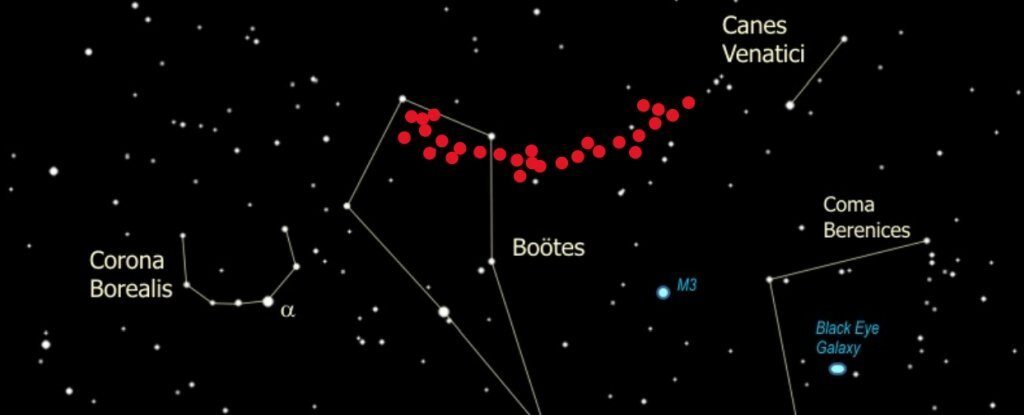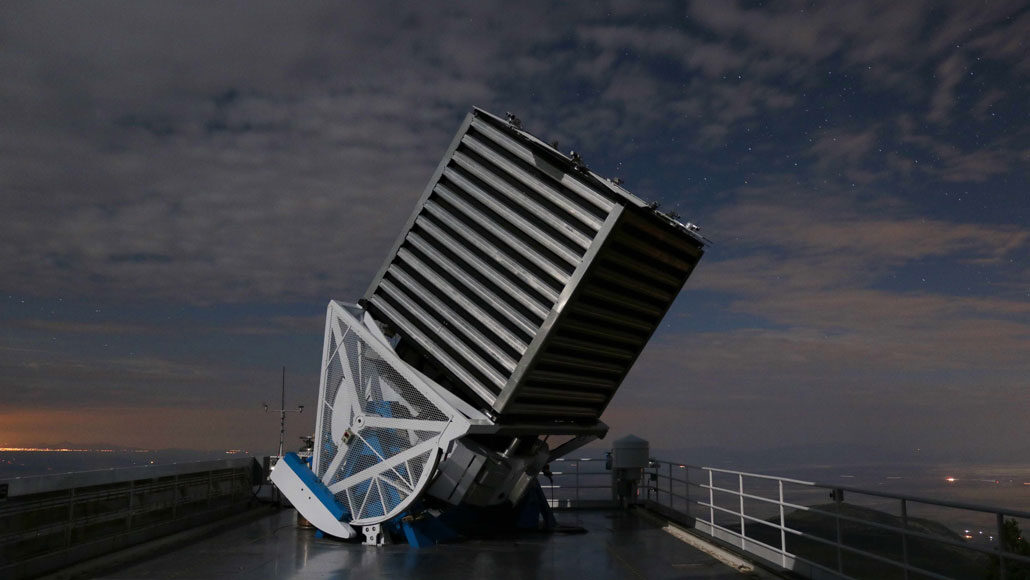
"It would overturn cosmology as we know it," said cosmologist Alexia Lopez at a June 7 news conference at the virtual American Astronomical Society meeting. "Our standard model, not to put it too heavily, kind of falls through."
Lopez, of the University of Central Lancashire in Preston, England, and colleagues discovered the purported structure, which they call simply the Giant Arc, by studying the light of about 40,000 quasars captured by the Sloan Digital Sky Survey. Quasars are the luminous cores of giant galaxies so distant that they appear as points of light. While en route to Earth, some of that light gets absorbed by atoms in and around foreground galaxies, leaving specific signatures in the light that eventually reaches astronomers' telescopes (SN: 7/12/18).

"This is a very fundamental test of the hypothesis that the universe is homogeneous on large scales," says astrophysicist Subir Sarkar of the University of Oxford, who studies large-scale structures in the universe but was not involved in the new work. If the Giant Arc is real, "this is a very big deal."
But Sarkar isn't convinced it is real yet. "Our eye has a tendency to pick up patterns," Sarkar says, noting that some people have claimed to see cosmologist Stephen Hawking's initials written in fluctuations in the cosmic microwave background, the oldest light in the universe.
Lopez ran three statistical tests to figure out the odds that galaxies would line up in a giant arc by chance. All three suggest that the structure is real, with one test surpassing physicists' gold standard that the odds of it being a statistical fluke are less than 0.00003 percent.
That sounds pretty good, but it may not be enough, Sarkar says. "Right now, I would say the evidence is tantalizing but not yet compelling," he says. More observations, from Lopez's group and others, could confirm or refute the Giant Arc.
If it is real, the Giant Arc would join a growing group of large-scale structures in the universe that, taken together, would break the standard model of cosmology. This model assumes that when you look at large enough volumes of space — above about 1 billion light-years — matter is distributed evenly. The Giant Arc appears about three times as long as that theoretical threshold. It joins other structures with similarly superlative names, like the Sloan Great Wall, the Giant Gamma-Ray Burst Ring and the Huge Large Quasar Group.
"We can have one large-scale structure that could just be a statistical fluke," Lopez said. "That's not the problem. All of them combined is what makes the problem even bigger."
Lisa Grossman is the astronomy writer for Science News. Previously she was a news editor at New Scientist, where she ran the physical sciences section of the magazine for three years. Before that, she spent three years at New Scientist as a reporter, covering space, physics and astronomy. She has a degree in astronomy from Cornell University and a graduate certificate in science writing from UC Santa Cruz. Lisa was a finalist for the AGU David Perlman Award for Excellence in Science Journalism, and received the Institute of Physics/Science and Technology Facilities Council physics writing award and the AAS Solar Physics Division Popular Writing Award. She interned at Science News in 2009-2010.



Comment: Some more information on the Giant Arc of Galaxies: